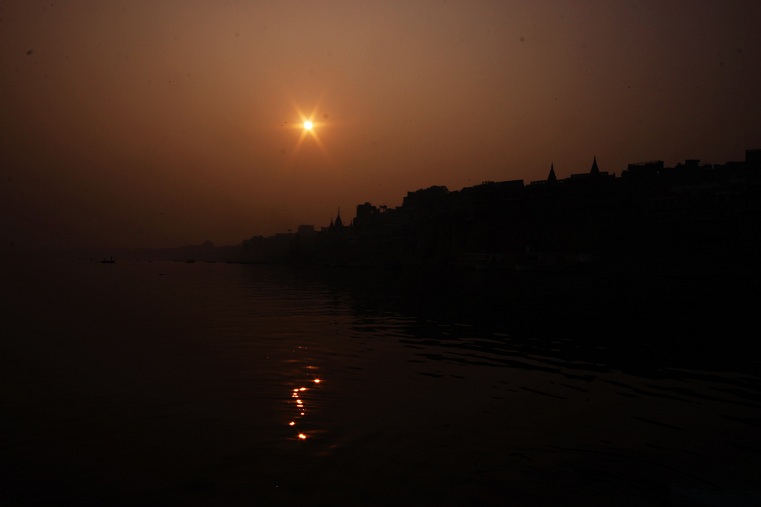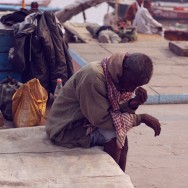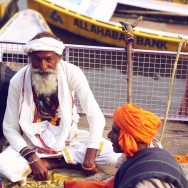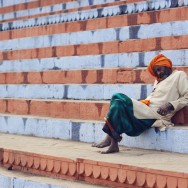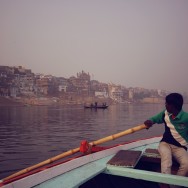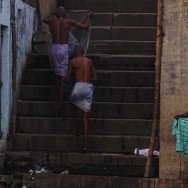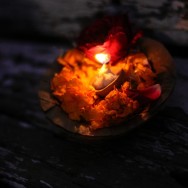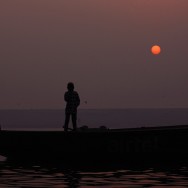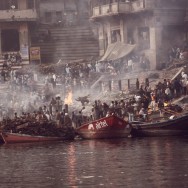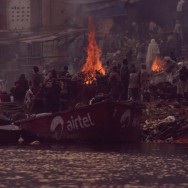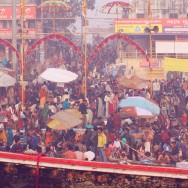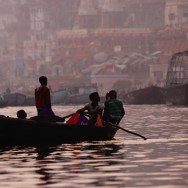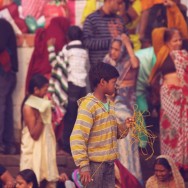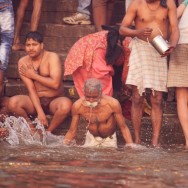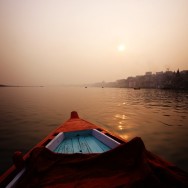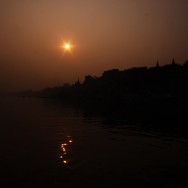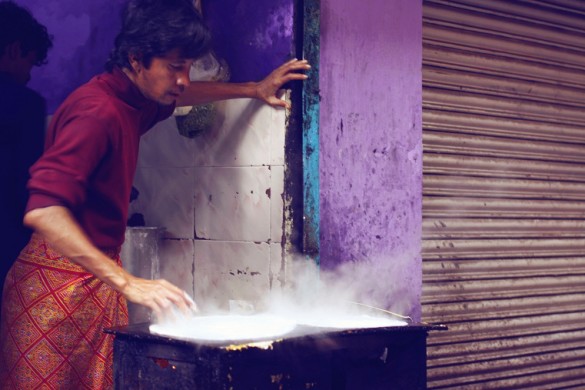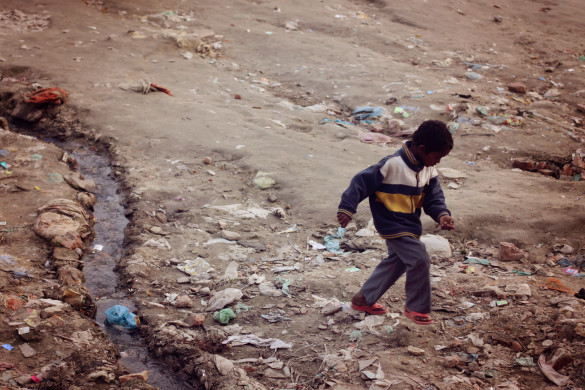Varanasi: brace yourself. It’s one of the most blindingly colorful, unrelentingly chaotic, and unapologetically indiscreet places on earth. No joke. This is the real deal, folks. It’s rude, crude, and out of control. Give it a little time, let the dust settle, and you just might want to stick around for a few days, as I did. After all, it’s the City of Life, or so I am told.
Life in Varanasi isn’t confined to human life. Dogs, cows, buffaloes, goats, birds and cats survive, reproduce and die in and along the great Ganges River. Cows navigate narrow passageways and feast on vegetables and waste, left on the streets by many. Buffaloes bathe in the sacred waters alongside men washing laundry, and the many pilgrims who have come from all over, to line the ghats, in hopes of washing away a lifetime of sins. Apparently one dip, splash, or sprinkle in the “sacred” water is all it takes to be clean as a whistle!
But there is another side to Varanasi, and that is death. For Hindus, the sacred Ganges River is considered a most auspicious place, and to die here means that the person has escaped the cycle of rebirth and reincarnation, and is granted instant salvation. The elderly contemplate life at its riverbanks. Families relocate here near the time of imminent death of a loved one, and once death has come, they prepare for cremation.
Cremation is big business. At the burning ghats, piles of wood are ready for a family to purchase. It is a science to determine how much wood is needed to burn an entire corpse. Male family members stand around and participate in the activity, while women are not seen, but are said to be watching from afar. Bodies, draped in orange fabric are carried through the streets in procession to the ghat. Feet and sometimes faces are exposed. The flames billow and reach for the sky, while smoke wafts into the eyes of onlookers. Once the body has turned to ash, men wade with sieves full of it, shaking the remains into the Ganges River, removing any trinkets left behind. Children and pregnant women are not allowed to be cremated, therefore when they pass, they are weighted down and pulled away from shore. At some point, they will likely resurface and drift downstream, but here, that isn’t cause for concern, as it’s simply part of the cycle…

